Types and features of open roof greenhouses

The cultivation of vegetables, herbs and other crops is considered a difficult task, since certain climatic conditions are necessary for the normal growth of plants. Therefore, many land owners prefer to install open-roof greenhouses. They not only allow maintaining the required level of humidity and heat inside the structure, but also are easy to assemble. Due to the huge choice of shapes and sizes, such structures can be placed on sites of any size.


Features and types
The open-roof greenhouse is a unique design that is very popular and in demand in agricultural activities. One of its main components is the roof, which has to withstand snow loads and wind in winter. Due to the negative impact of external factors, it can be damaged and become unsuitable for further use. Therefore, its frame is made of durable material, which has a collapsible appearance.
The roof is assembled for the winter, and dismantled in the fall.
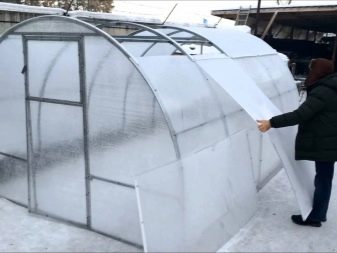
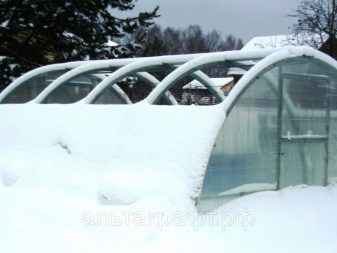
These greenhouses are designed for early cultivation of seedlings, herbs and other vegetable crops. The structure can reliably serve for more than one year, since it is equipped with a strong frame, sheathed with canvas or film, there are also structures with removable sides. Greenhouses are often covered with polycarbonate, which retains heat well inside the structure and allows the required level of light for plants to pass through. Thanks to the removable roof in the greenhouse, the thermal regime can be controlled, and when it gets hot in it, the structure is opened. If this is not done, the crops may turn yellow and disappear due to excess moisture evaporation.
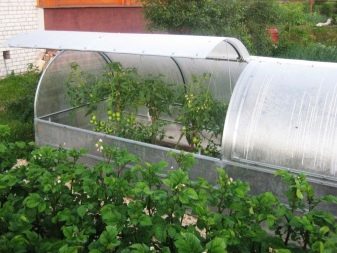
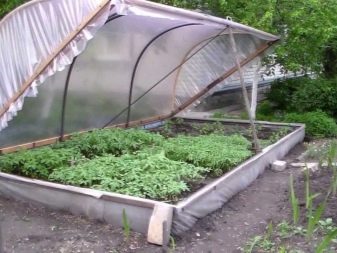
For home growing of plants, as a rule, greenhouses of a standard size of 2x4 m are installed. Depending on the structure of the structure, several types are distinguished.
- "Cabriolet". The roof in such a structure is not removed, but leans back or slides down along the grooves. Outwardly, the frame resembles a bread bin. If necessary, you can open the roof completely or only some of its sections.
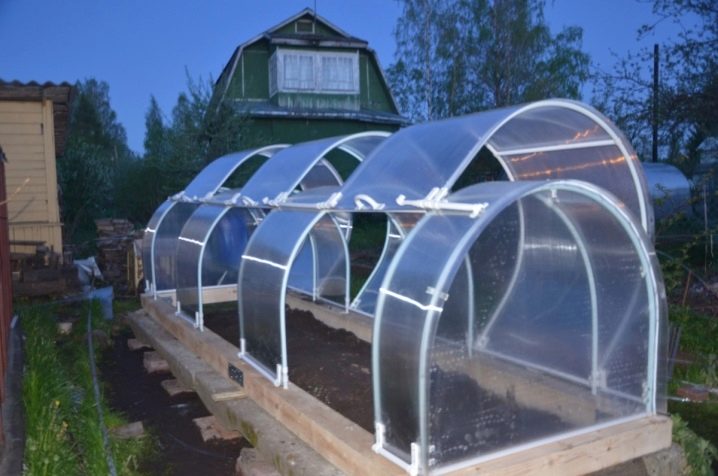
- "Butterfly". The greenhouse has the appearance of an arch, its roof consists of several parts attached to the walls, which, when opened, rise with it. Outwardly, it resembles the wings of a butterfly. If it is planned to install a large structure, then this model of the greenhouse is recommended to be divided into separate segments, this will protect the crops from hypothermia.
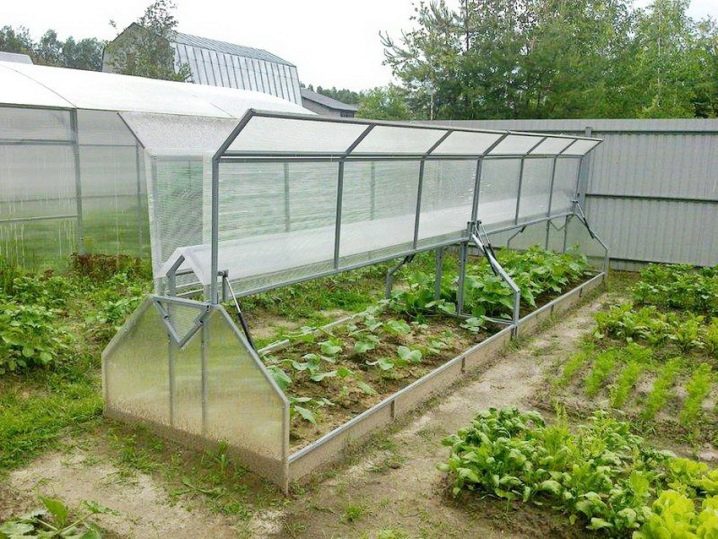
- "Matryoshka". It is similar to the "butterfly", but, unlike the previous version, its details are shifted to the sides. Thanks to the unique structure in the greenhouse, you can either completely open the space, or leave small areas for ventilation. This design does not require the installation of a foundation, it is easy to assemble and convenient in transportation.

Forms and dimensions of the structure
Today, there are many models of greenhouses with an opening roof, which differ among themselves not only in design features, but also in shape and size.
Most often, buildings of several shapes are chosen for growing crops.
- Arched. The frame of the structure looks like a semicircle, therefore moisture is evenly distributed inside it, and condensate does not collect on the walls, but flows down.For ease of use, such greenhouses are divided into segments that are connected at the top of the roof.
- Triangular. Greenhouses are covered with a gable roof, which externally forms a triangular shape. Each of the planes can open independently.

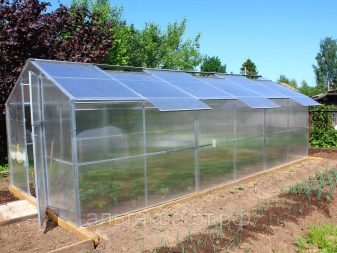
- Flat. The configuration of the building for assembly resembles a greenhouse. The roof in this case is made single-pitched, it can be opened and closed at any time. The only drawback of the structure is that, due to its flat shape, precipitation constantly accumulates on the roof.
- Dome. The structure is assembled from triangular elements, each of which is sheathed with a special material. Thanks to its convenient structure, the greenhouse roof can be opened completely and partially.

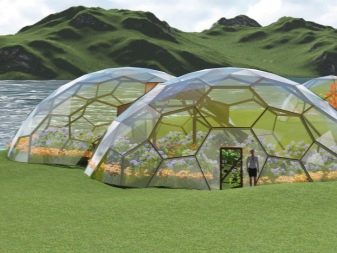
Many gardeners prefer to build greenhouses with their own hands., this allows not only saving money, but also choosing a convenient construction option using an individual project. In order to independently install the structure, you need to correctly choose the optimal dimensions for it. Usually, standard indicators are used for the installation of greenhouses.
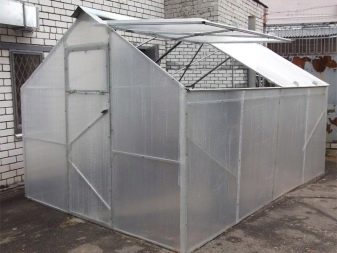
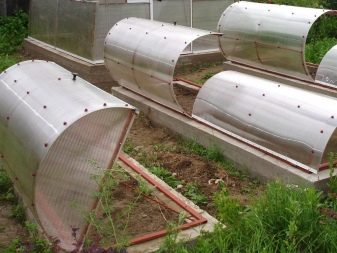
- Width. Not only the convenient placement of plants depends on this value, but also access to the space for their care, in a spacious room it will be comfortable to work and move. The width of the building is also influenced by the width of the doors, which cannot be less than 56 cm, the width of the racks, in addition, a small passage of 60 cm must be provided between the racks.Proceeding from this, 2.4 m is considered the optimal width for the greenhouse. Depending on the design, the dimensions can change, you can install wide structures and place several racks in them on both sides, it all depends on the needs of the gardener.
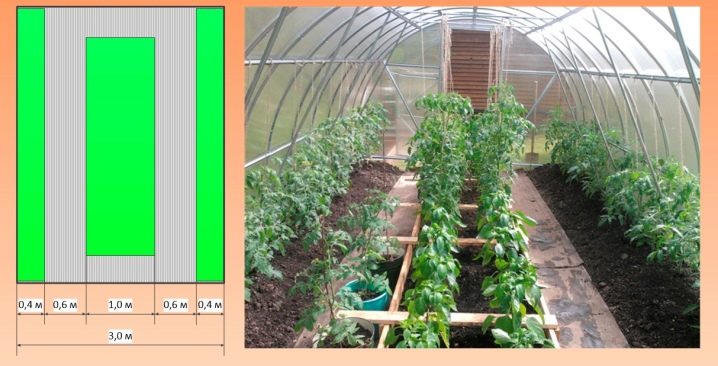
- Length. It can be different. Usually the standard length of greenhouses is 120 cm, as it corresponds to the dimensions of polycarbonate sheets, which are often used for frame cladding. When creating a design project, it is also important to take into account the number of pallets placed on the racks. Traditionally, pallets are produced with dimensions of 28 × 53 cm, calculating their number, it will be easy to determine the required length of the structure. It should be noted that it is difficult to maintain optimal conditions for growing crops in long greenhouses, so it is best to give preference to small structures.
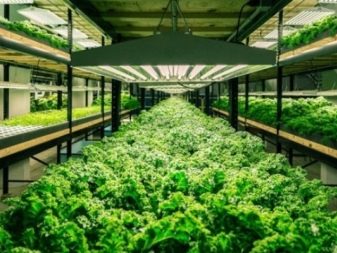

- Height. It depends on the selected type of greenhouse construction and the shape of the roof. As a rule, the height should not exceed 180 cm. If it is planned to plant fruit trees and tall plants, then the project is created individually, and the height is increased.
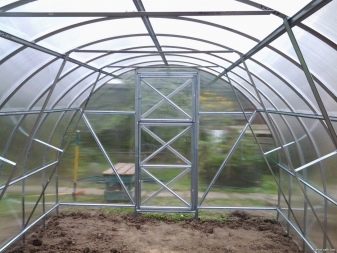

Cover material
Various building materials are used for cladding greenhouses with an opening roof. Polyethylene film is very popular among gardeners; it is characterized by high strength and long service life, which can reach up to 6 years. Distinguish between ordinary, warm, sun-resistant and reinforced film. In order not to damage the material, when sheathing it should not be too tight, and sharp corners and places of contact with the frame should be covered with special protection. The film is inexpensive, and due to the fact that it is capable of transmitting light well, it can be applied in several layers.
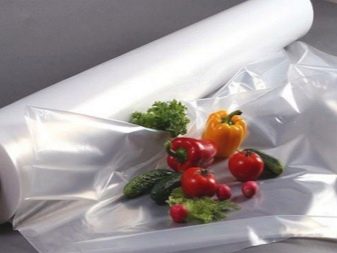
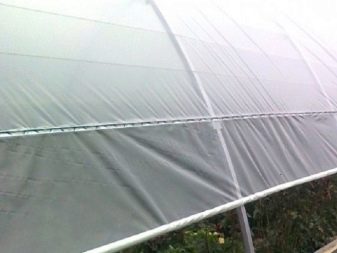
Cellular polycarbonate has also proven itself well as a finishing material. It has high strength, if it is sheathed in a greenhouse, then the structure can be used for many years and enjoy an excellent harvest. In addition, the material is characterized by heat retention, its properties are not inferior even to glazed structures. It is produced with a honeycomb structure. In addition, polycarbonate consists of a lower and upper layers, between which there are rigid ribs, they transmit the sun's rays in different directions, scattering them at the desired angle.
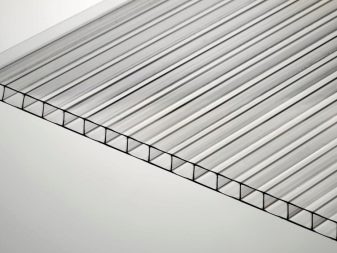
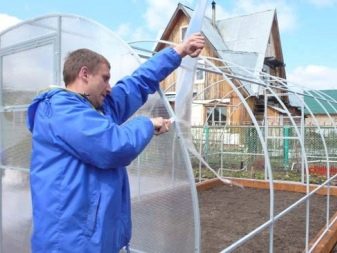
Recently, many manufacturers have been producing polycarbonate with unique properties, due to which the material allows only "useful rays" to pass through and prevents the penetration of ultraviolet radiation. In addition, it has high impact resistance and tolerates well not only hail, but also other mechanical damage.
Polycarbonate sheets are easily bent and take on the desired shape, so it can be used for any type of structure.
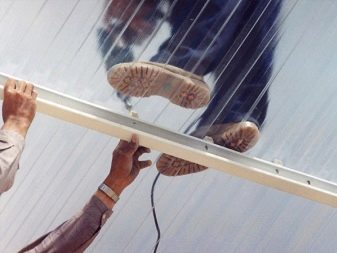
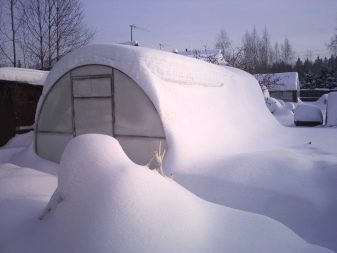
An awning is also used for covering greenhouses. This is a popular material that is made from non-woven fabric, most often thermoselect, lutrasil and agril are chosen for finishing structures. Although the awning is multifunctional, it reflects the light spectrum poorly. Therefore, a greenhouse equipped in this way will not please with a large harvest, since the heat inside the structure will be well preserved only during the day, and at night the plants can cool down sharply. A tent is not recommended for greenhouses in which it is planned to plant early seedlings, it will not protect them from frost.

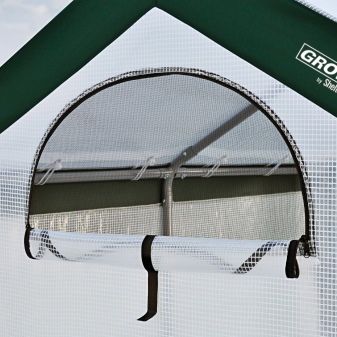
The most expensive material for covering greenhouses is glass. Such structures require the construction of a concrete foundation and the installation of a solid frame, but they are completely environmentally friendly and create an excellent microclimate for the growth of crops. In addition, glass is not afraid of severe frosts, heat and can withstand a lot of weight.
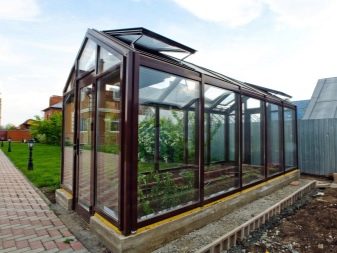
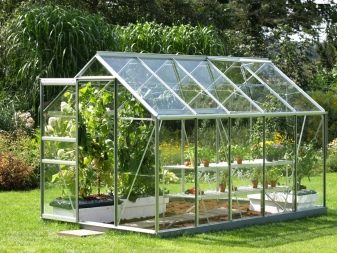
Tilt angle: which is better?
Before you build a greenhouse yourself, you need to determine the type of its roof and the angle of inclination. Usually, a gable or single-pitched roof is installed, depending on this, it can differ in size and open in a different way. Gable roofs are available in many design options and are characterized by positive properties. For them, the optimal angle of inclination is 20-25 degrees, if it is made less, then the "slope" will disappear, and a large angle of inclination, on the contrary, will make the roof high, and it will be cold inside the greenhouse.
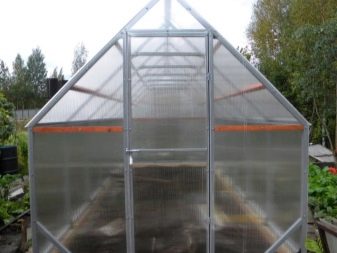
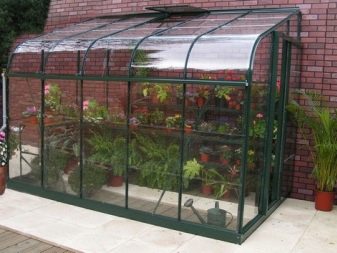
Roofs with the optimal slope have several advantages.
- They let in more light. Thanks to the correct inclination, the sun's rays are evenly distributed and generate heat energy.
- Does not hold snow. Precipitation will not collect on the roof to prevent weight damage.
- Does not leak, dries quickly. Since the surface of the roof will always be dry, this will protect it from the formation of moss and dirt. This roof is easy to clean.
When building greenhouses, it is best to erect the roof of the structure at a degree of 20-25 degrees.
This will not only extend the life of the facility, but will provide optimal conditions for a high yield.
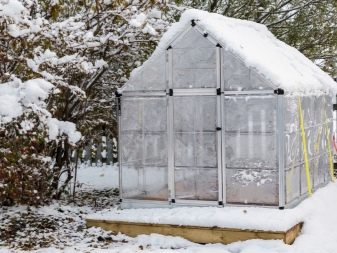
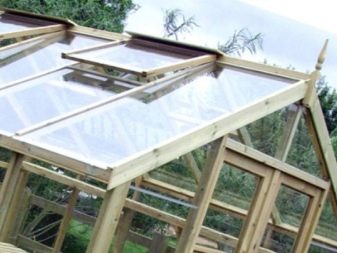
Advantages and disadvantages
Recently, greenhouses with sliding and sliding roofs have been widely used in agriculture. They are convenient to use, easy to assemble and allow you to grow a variety of crops.
Convertible top designs have the following benefits:
- the possibility of ventilation: regardless of the season, the roof can be fully or partially opened and the required movement of air flows is ensured;
- no draft;
- good lighting;
- protection of the roof from deformation;
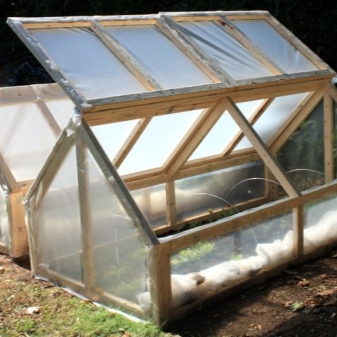
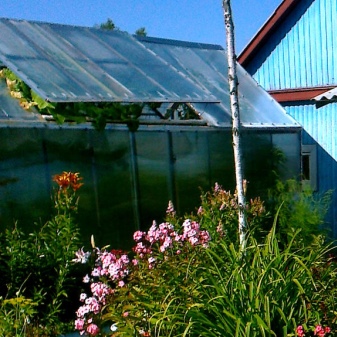
- maintaining an optimal microclimate for plant growth;
- affordable price;
- the possibility of installation on a land plot of any size.
As for the shortcomings, such greenhouses have only one - low tightness. Therefore, it is undesirable to plant heat-loving crops in these structures. They are usually used to grow vegetables, berries, herbs and some types of mushrooms. It is possible to additionally increase the tightness of structures with the help of cladding with special materials that will help to avoid the penetration of cold air inside.
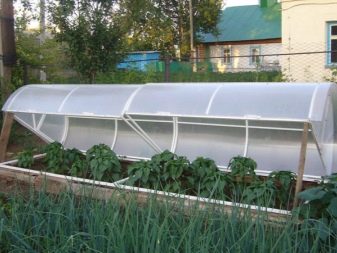
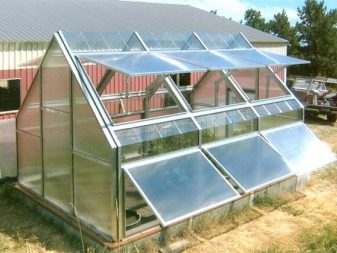
Use and care, reviews
Convertible greenhouses require compliance with certain operating rules. The roof needs to be fully pushed apart for the winter, and assembled in the summer.This condition is mandatory for all types of structures, regardless of their design features. Thanks to the fact that greenhouses are sheathed with modern materials, it has become much easier to provide them with proper care.


Structures should be placed in an area where there is access to light. Otherwise, due to lack of lighting, the plants will develop poorly, grow slowly and may die. When installing a greenhouse, it is important to resolve the issue of the function of its roof in winter. You need to know how it will be removed and cleared of snow. Of course, it will be difficult to do this in winter, but if you do not periodically ventilate the structure inside, then the roof can serve as an excellent place for the development of microorganisms, which will further harm plants and cause various diseases.
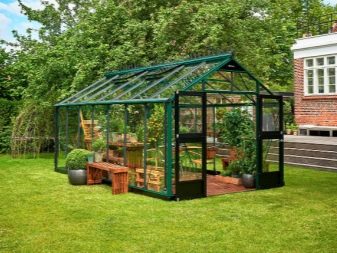

In addition, it is important to constantly clean the roof and walls of the structure from snow. Although most finishing materials are highly durable, during a thaw, an ice crust may appear on their surface, which can further damage their structure and cause deformation. Wet snow is considered especially dangerous; under the influence of its heavy weight, the roof can sag and small gaps are formed that will break the tightness.
Therefore, the greenhouse should be well cleaned and ventilated, thus, the necessary circulation of cold and hot air flows inside the structure will be fulfilled.
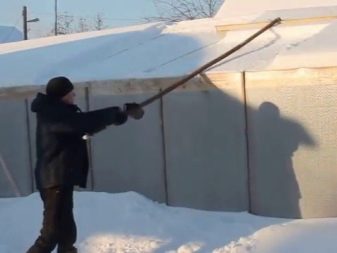
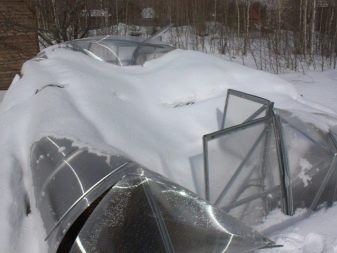
Many gardeners sheathe greenhouse structures with polycarbonate, it scatters the rays of the sun well, but plants also need natural lighting, so the roofs must be moved or removed. It is also important to regularly check the operation of the sliding parts, if necessary, tighten and lubricate the hinges, clean the grooves from dirt.
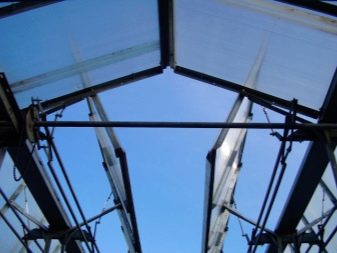
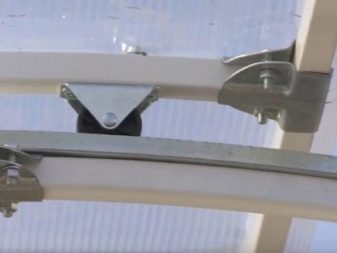
Once a year, such greenhouses require general cleaning, which is best done in the fall. For this, the soil is cleared of plant residues, digged and fertilized. The walls of the structure are washed with soapy water, it is worth paying attention to the fact that the use of chemical solutions is unacceptable, since they may contain aggressive substances that will damage the finish. Especially carefully you need to wash the joints and seams of the structure, since it is there that microorganisms most often accumulate.
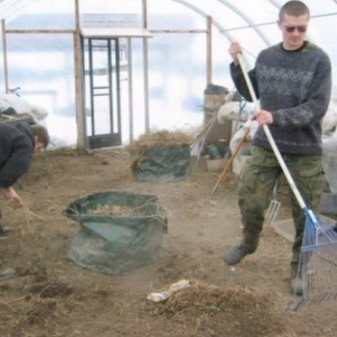

Today there is a huge selection of open roof greenhouse models. The designs "Matryoshka", "Present" and "Nurse-clever" are very popular among them. They have received many positive reviews and have established themselves as the best growing facilities. These greenhouses are easy to operate, easy to install and provide all the necessary conditions for crop growth.
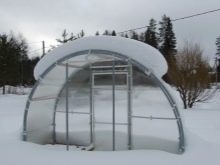
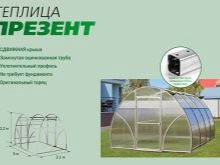

Greenhouse "Lotus": description
"Lotus" is a unique greenhouse structure. It has a compact design, so it can be placed in areas with limited space. This greenhouse option is well suited for novice agronomists. The structure is assembled from durable galvanized pipes, its frame is sheathed with polycarbonate, therefore, unlike other models, it is reliable in operation and serves for many years.
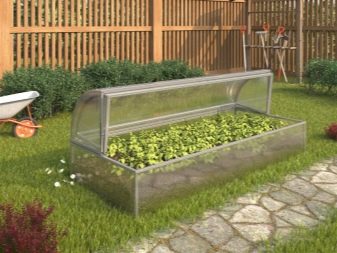

The roof of the "Lotus" greenhouse is fixed with special doorsso it can be opened from either side. Thanks to this design, plants can be outdoors on sunny days, and in cool weather they can be easily hidden under a canopy. "Lotos" is well suited for growing greens, cucumbers, tomatoes and crops that do not like a lot of moisture, since they can be protected with shutters in the rain.
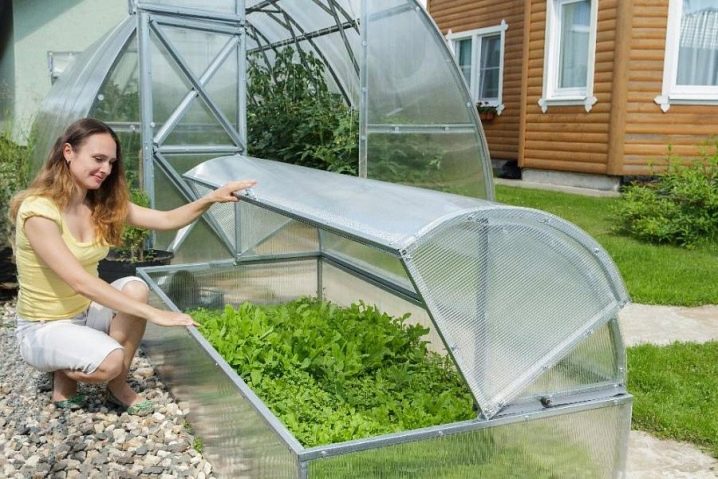
The greenhouse has standard dimensions: length 210 cm, width 90 cm and height 80 cm. The structure is considered to be medium in size, so it can be installed both in large and small areas. It should be noted that the lotus greenhouse is inexpensive, even a beginner amateur gardener can afford it.A distinctive feature of the structure is its technical design, thanks to which all joints and seams of the structure are closed with special protective corners. Therefore, dirt does not get on the surface of the finish and the frame.
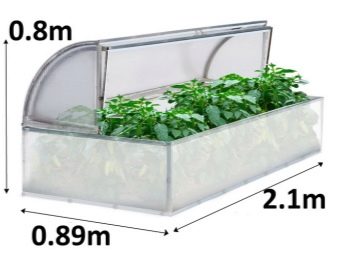

The package of the greenhouse "Lotos" also includes additional seals, as well as a frame fixer. Installation of the structure does not require pouring the foundation, installation work is carried out quickly, and if necessary, the structure can be easily assembled and moved to another place.
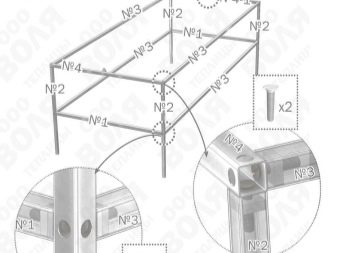
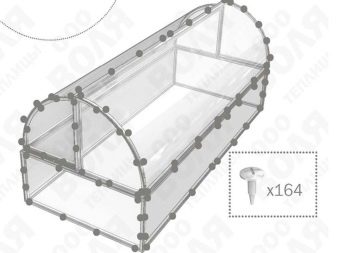
For information on how to properly assemble the "Clever" greenhouse with an opening roof, see the next video.





























































The comment was sent successfully.